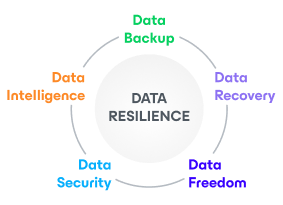Veeam Unveils a New Alliance Partnership with ServiceNow with the Launch of a Free App
Cloud Backup: Why It’s Critical for Data Recovery and Business Resilience
Why Intune Policy Backup is Essential for Microsoft Entra ID
VEEAM AT AWS RE:INVENT 2025
Everything You Need to Know about Microsoft Ignite 2025
Why Veeam Kasten + Nutanix Is a Future-Ready Move for Post-VMware Modernization
Traditional type-one hypervisor customers are at a crossroads. According to a June 2025 survey by Rimini Street, 98% of organizations that currently use VMware are either actively exploring or have already adopted alternative platforms in response to evolving pricing, support models, and long-term uncertainty.
In a recent article written by Nutanix for The Register, the company introduces two distinct types of customers who are navigating this transition. The first is modernizers, who are eager to embrace cloud-native and AI-ready platforms. The second is gradualists, who opt for ... Read more
Securing AI in Kubernetes: A Guide to Getting Started with LLMs and RAGs
Like many emerging technologies, the marketing narrative and hype for AI technology deployment on Kubernetes is ahead of reality. Survey data from industry reports show that 90 percent of enterprises expect their AI workloads on Kubernetes to grow over the next 12 months, and 54% of enterprises say they already run some AI ML workloads on Kubernetes clusters. However, a very low percentage of companies have currently deployed AI-powered systems like knowledge platforms by using Large Language Models (LLMs) and Retrieval-Augmented Generation ... Read more
Veeam Unveils Next-gen Data Resilience for Microsoft 365 and Entra ID
Recently, Veeam announced new next-gen data resilience capabilities for collaboration and identity coming soon within the Veeam Data Cloud platform. These enhancements, which touch on advanced threat detection, encryption, intelligence, and more, signal Veeam’s unwavering commitment to innovation, security, and customer empowerment. You can watch the full announcement webinar here.
Here’s a full recap of the announcement webinar, including insights and what’s coming soon.
Identity Is the New Front Door
As organizations expand their use of Microsoft 365 and Entra ID, identity has quickly become the prime target for attackers. Identity-based attacks now exceed 600 million attempts per day, a tenfold increase over just a few ... Read more
Rethinking 3-2-1 Rule for Microsoft 365 Backup: Two Engines, One Outcome
Security leaders don’t buy backups, they buy risk reduction and defensible compliance. The 3-2-1 backup rule remains the most durable way to break dependency chains: keep 3 copies of your data, on 2 different storage systems or media, with 1 copy offsite (ideally immutable). In cloud productivity suites like Microsoft 365, the key isn’t counting copies but ensuring those copies live in different failure domains with evidence you can take to an auditor.
What changes in the cloud
Classic 3-2-1 backup strategies were built around on-premises software solutions, and static infrastructure: one vendor, one appliance, and a remote vault. But with SaaS backups protecting cloud platforms like Microsoft 365, we introduce new dynamics that shift how risk is managed and how independence ... Read more
